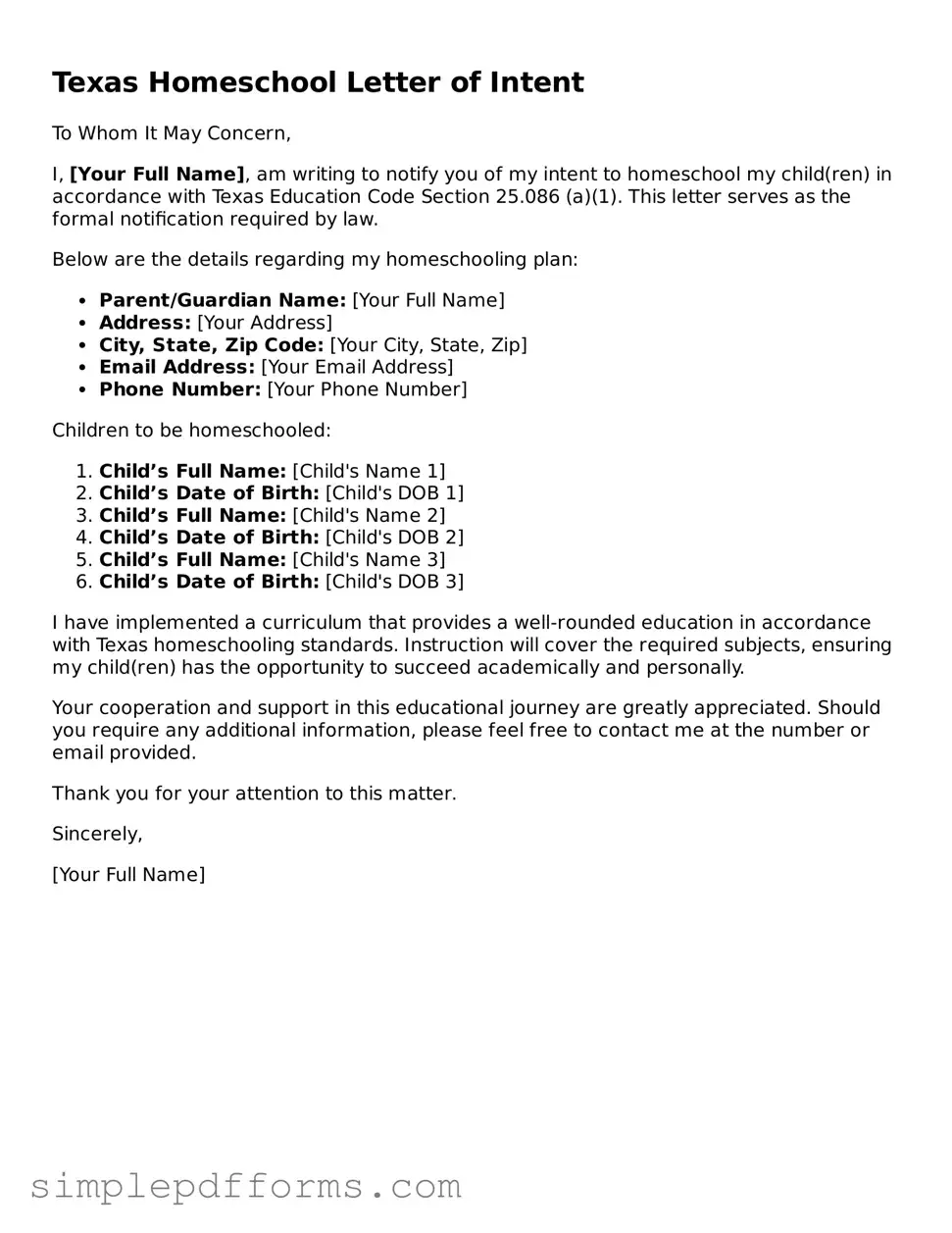Texas Homeschool Letter of Intent
To Whom It May Concern,
I, [Your Full Name], am writing to notify you of my intent to homeschool my child(ren) in accordance with Texas Education Code Section 25.086 (a)(1). This letter serves as the formal notification required by law.
Below are the details regarding my homeschooling plan:
- Parent/Guardian Name: [Your Full Name]
- Address: [Your Address]
- City, State, Zip Code: [Your City, State, Zip]
- Email Address: [Your Email Address]
- Phone Number: [Your Phone Number]
Children to be homeschooled:
- Child’s Full Name: [Child's Name 1]
- Child’s Date of Birth: [Child's DOB 1]
- Child’s Full Name: [Child's Name 2]
- Child’s Date of Birth: [Child's DOB 2]
- Child’s Full Name: [Child's Name 3]
- Child’s Date of Birth: [Child's DOB 3]
I have implemented a curriculum that provides a well-rounded education in accordance with Texas homeschooling standards. Instruction will cover the required subjects, ensuring my child(ren) has the opportunity to succeed academically and personally.
Your cooperation and support in this educational journey are greatly appreciated. Should you require any additional information, please feel free to contact me at the number or email provided.
Thank you for your attention to this matter.
Sincerely,
[Your Full Name]
